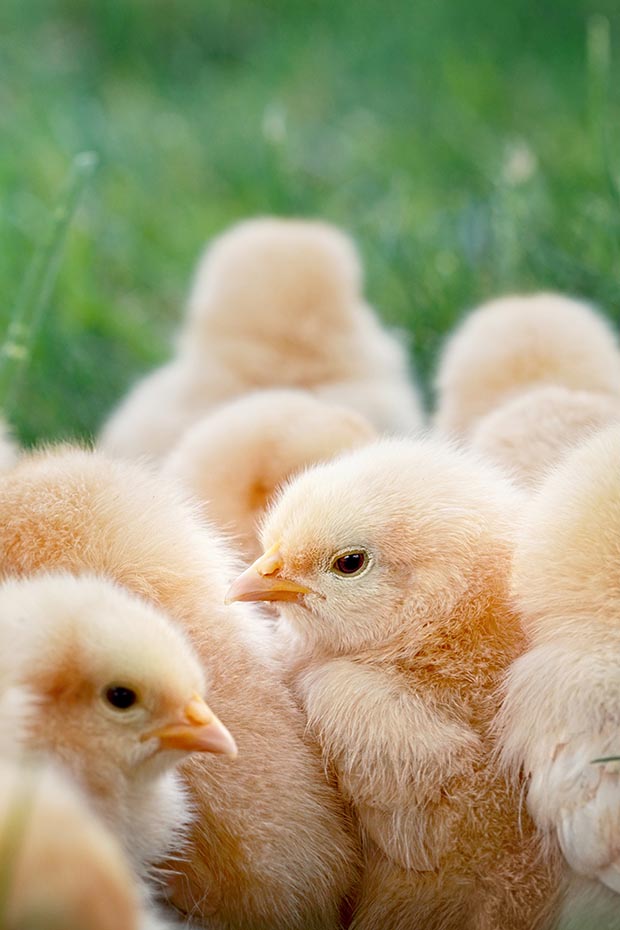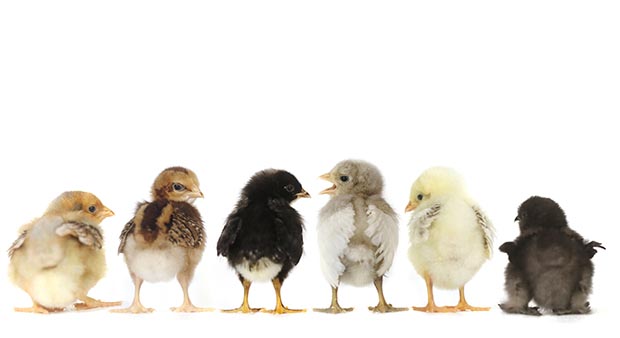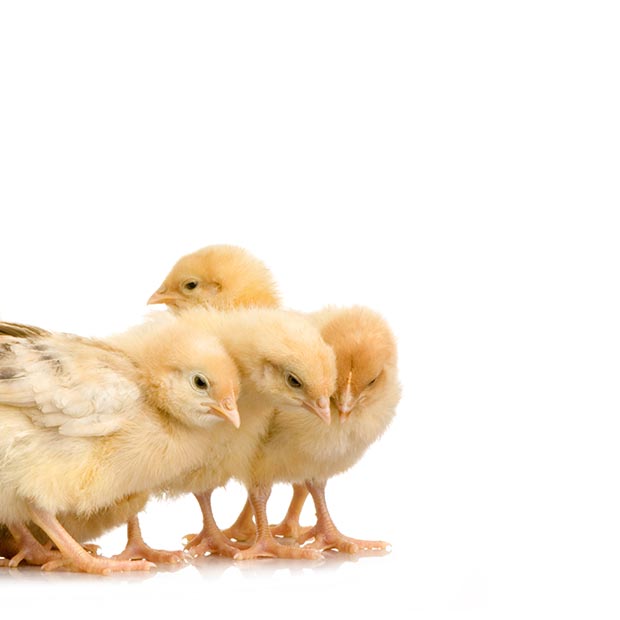10 things every chicken owner should know about Marek’s disease

Just the mention of Marek’s disease arouses dread in many poultry keepers, but there is a lot of misinformation around which only serves to enhance those fears.
Words: Sue Clarke
Before science knew its name or what the causative agent was, Marek’s was known by various terms, among them new pullet disease, range paralysis and grey eye. Today we know a lot more about this nasty virus.
1 THESE BIRDS ARE MOST AT RISK
It typically affects young birds from about 10 to 25 weeks old and 25% mortality is not uncommon in unvaccinated birds during the rearing stages. Chicks are most susceptible from one-day-old and for the first month of life, however the disease symptoms may not manifest themselves for many weeks, most commonly 10-25 weeks.
2 MAREK’S IS CAUSED BY A HERPES VIRUS
The disease was named after József Marek, a Hungarian veterinarian, and is caused by a highly contagious viral disease of the Herpes family. It is primarily only a disease of domestic chickens, although infection has been reported in other avian species and a related Herpes virus found in turkeys which causes no apparent disease in turkeys can be used as a vaccine (HVT) for chickens.
3 VACCINES ARE FAIRLY NEW
A vaccine for Marek’s disease has only been available since 1970. Prior to this it was normal for world poultry farmers to have significant losses from Marek’s disease, so almost all commercial laying hens were vaccinated once it was discovered.
However, there was a resurgence of the disease in the mid-1980s and a new vaccination programme was developed to cope with new virulent strains. It is now common practice to vaccinate the parent breeding stock of commercial laying birds with a different vaccine to that which is used on their offspring.
4 VACCINES CAN’T WORK FOR THE AVERAGE BACKYARD FLOCK
Marek’s vaccine is readily available but it comes in vials with a 1000 dose minimum for one-day-old chicks. Once mixed with the diluent, it must be swirled gently every five minutes, and the bottle must be completely used up within 24 hours of being opened, making use of vaccine by the small poultry keeper virtually impossible.
There are a few other restrictions which makes Marek’s vaccinations an unsuitable process for small flock owners.
5 MAREK’S DISEASE IS MUCH MORE COMMON THAN YOU THINK
There is a saying ‘if your chicken breathes it has been in contact with Marek’s disease’ so no matter how stringent your cleaning or processes, you can’t stop birds getting Marek’s disease.
6 IT’S A DOUBLE WHAMMY FOR AN INFECTED BIRD
Marek’s supresses the immunity of a bird, increasing its susceptibility to other diseases such as coccidiosis.
7 IT IS NOT EGG -TRANSMITTED
Marek’s cannot be passed by the mother through the shell. It is shed in skin particles and in cells associated with the feathers.
8 THE DISEASE HAS A LONG INCUBATION PERIOD
This can be up to three months or longer, and it can manifest itself in three different ways:
1. Nervous (neurological) – paralysis of the legs/wings,eye lesions.
2. Visceral – tumours of the organs and muscles.
3. Cutaneous – tumours of the skin and feather follicles.
The vaccine prevents the formation of tumours but it does not prevent the infection and shedding of the field virus by the chicken. Even vaccinated birds may exhibit other clinical symptoms unless attention is made to good hygiene. It is essential to place the vaccinated day old chicks into a clean environment where there is no challenge by the virus.
9 SOME BREEDS ARE MORE SUSCEPTIBLE
Some breeds and even strains within a breed may be more susceptible to Marek’s disease and certain blood groups may also genetically have better resistance, depending on:
• the level of maternal antibodies in their system;
• their genetic resistance or susceptibility – Silkies and White Leghorns appear to be more prone to Marek’s disease, but some strains will be more susceptible;
• the contamination in their environment;
• early challenge to diseases like coccidiosis, infectious bronchitis or other immune-lowering conditions.
10 THERE IS NO EFFECTIVE CURE
Support your birds with a warm, dry, airy (but draught-free) living area, appetising food (eg, their usual pellets and something high in protein like dog roll or cat food), a vitamin supplement like Poly Aid Plus (see your vet or pet store), and hand-feeding a bird that is paralysed. A small percentage of birds may survive, and if they do they will be immune to Marek’s.
MAREK’S DISEASE: 6 SYMPTOMS

The clinical signs of Marek’s during an acute outbreak will be signs of depression, with birds standing around looking ‘off colour’. This could be followed by lame or paralysed birds. Mortality may occur with no symptoms at all or there may be paleness, loss of appetite, diarrhoea and dehydration, gasping, or blindness.
Note: many of these are also symptoms of other diseases.
SPECIFIC SYMPTOMS OF MAREK’S INCLUDES:
• Immune suppression and susceptibility to diseases like coccidiosis and blackhead.
• Paralysis, notably where a bird will have one leg forward and one leg back, but it may also drag one leg or wing as if it is broken. This may occur between 6-12 weeks old but it’s also seen up until sexual maturity (20-25 weeks).
• The nerves to the brain and neck may cause the head to bend under or twist to one side. The virus affects the major nerves to the legs or wings and the bird is unable to flex the muscles.
• A condition previously known as range or transient paralysis may also be due to the Marek’s virus.
• When the optic nerve is involved the iris may appear to be grey and the pupil becomes distorted and/ or blindness is apparent. This can develop much later in life, especially if the bird has been under stress.
• The visceral form which causes tumours, notably the ovary, liver, kidneys or lungs is most usually seen in weeks 10-15. Tumours present in young birds suggest Marek’s disease but in older mature birds are more likely to be caused by another disease called lymphoid leucosis. Tumours on the skin which may appear as bleeding feather follicles that won’t heal may occur in young birds as well.
8 REASONS WHY VACCINES AREN’T A PRACTICAL OPTION FOR BLOCK FLOCKS

• Most of the vaccines need to be stored in liquid nitrogen containers until thawed for use.
• There is a freeze-dried product which can be stored in the fridge but this may be less effective.
• The vaccine is usually in 1000- dose vials.
• The vaccine must be mixed with a diluent and once mixed it must be used within two hours.
• Vaccines must be used an one-day-old chicks before any contact with other poultry is made.
• The vaccine is administered at 0.2ml in the skin on the neck.
• All commercially-bred laying pullets (Hyline and Shaver Browns) are vaccinated at one-day-old before they leave the hatchery.
• Chicks which have been vaccinated (and this applies to all vaccinated chicks bought from commercial hatcheries) must be kept away from other poultry or possible contamination from dust or feather dander from older poultry for a minimum period of two weeks and preferably six weeks, to allow immunity to develop.
Love this story? Subscribe now!
 This article first appeared in NZ Lifestyle Block Magazine.
This article first appeared in NZ Lifestyle Block Magazine.
